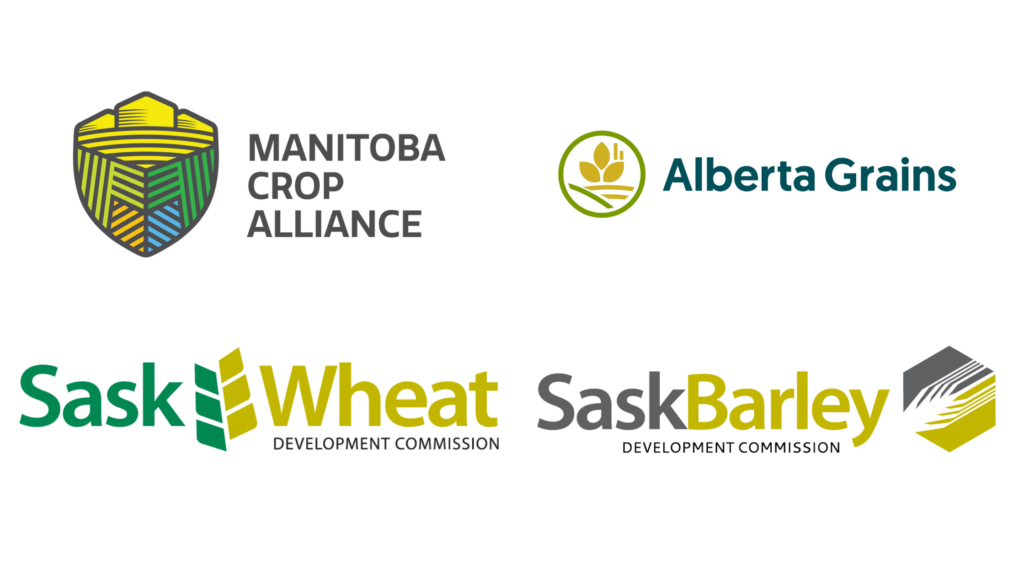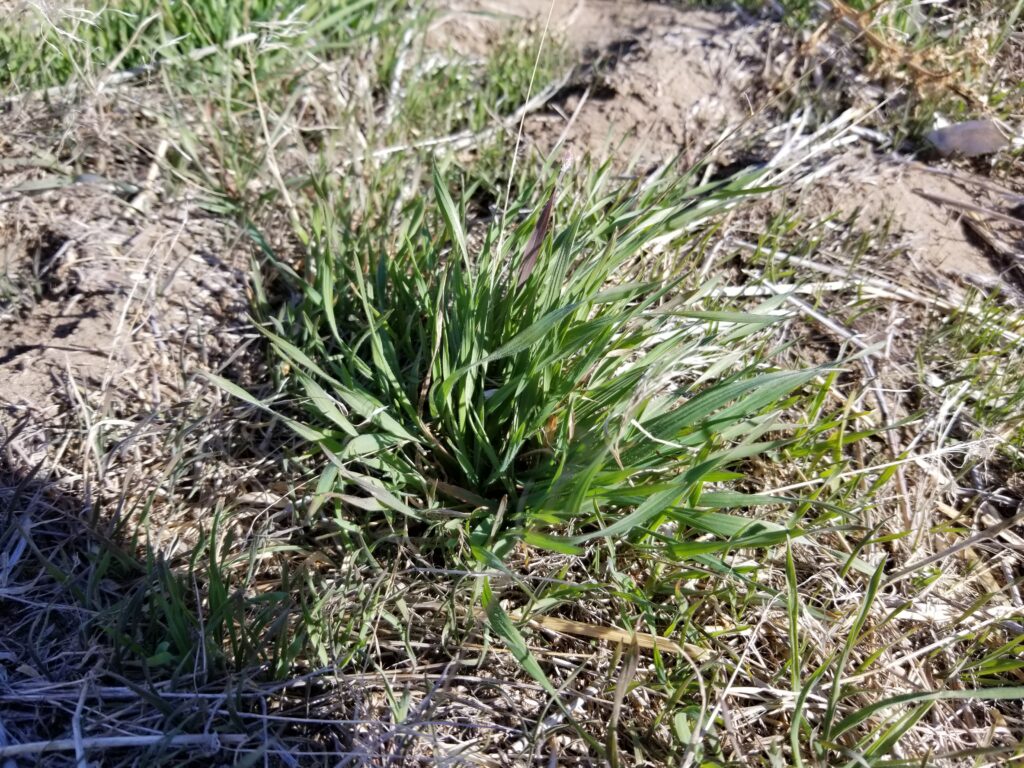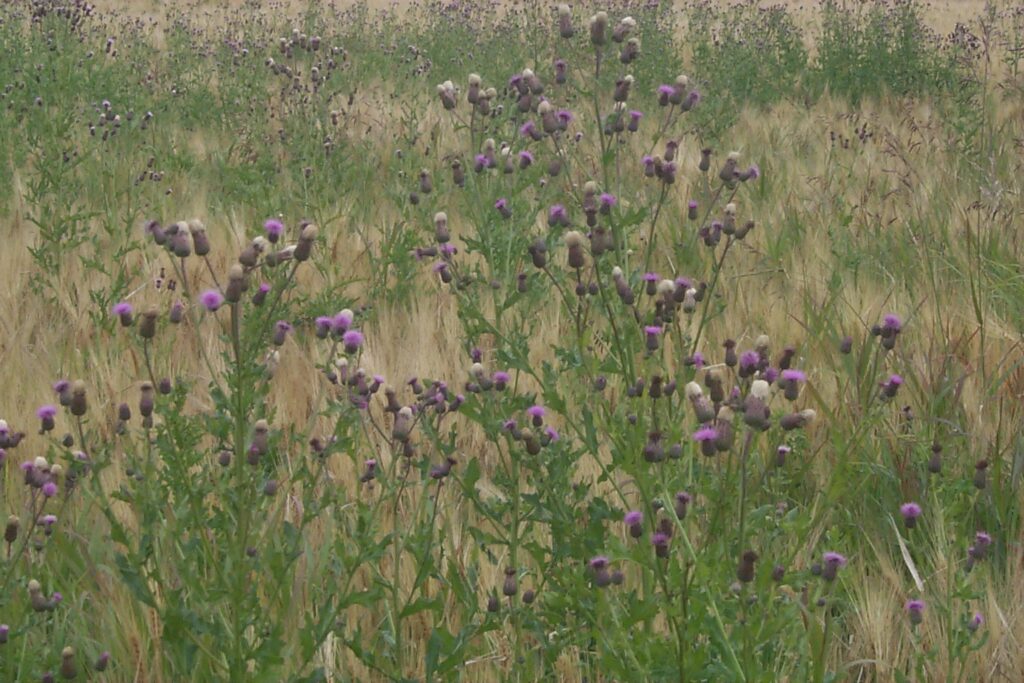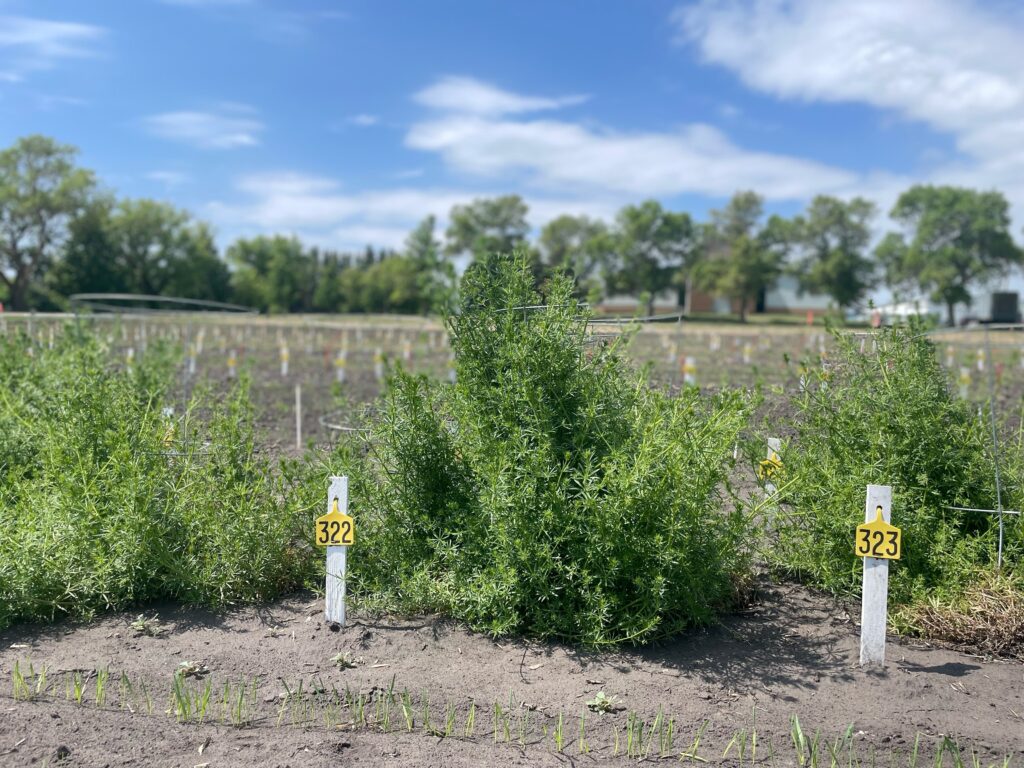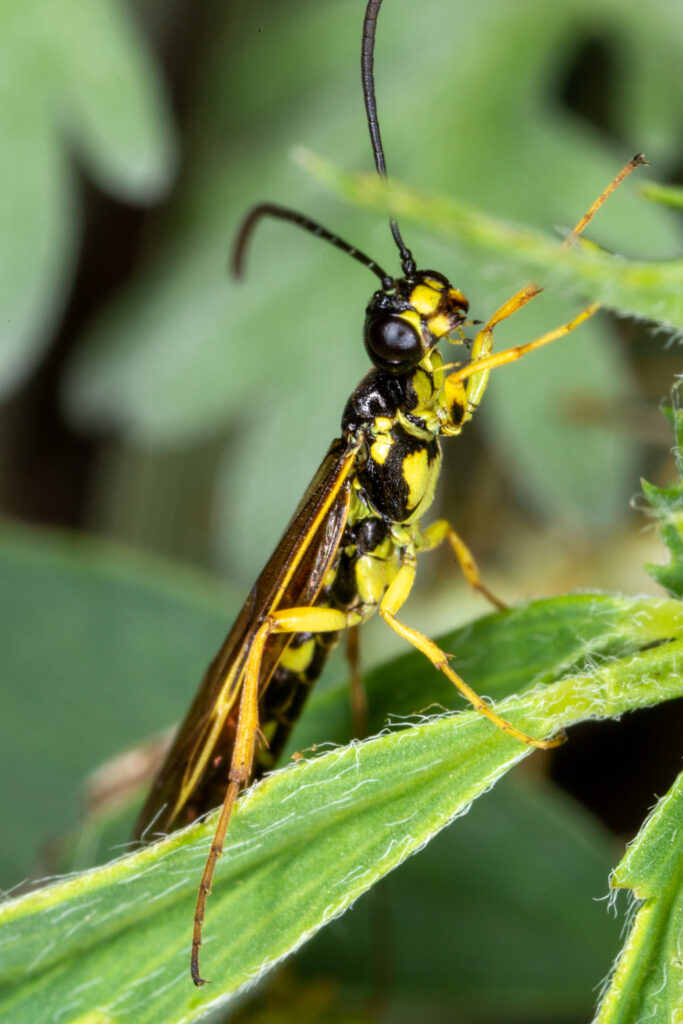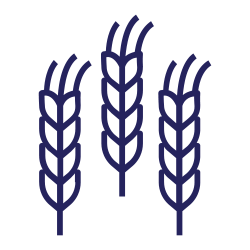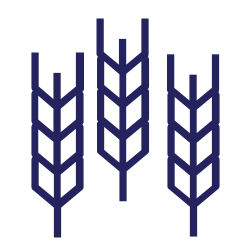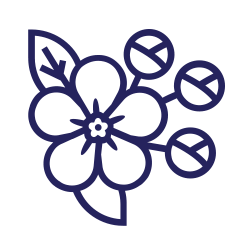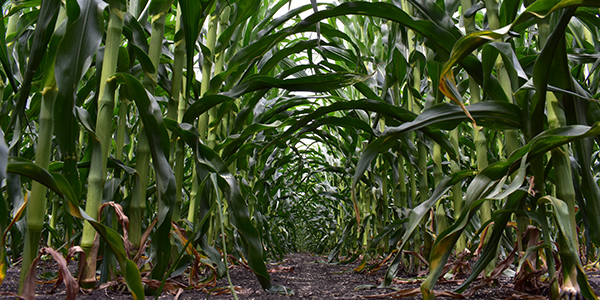Section Title
Fall Considerations for Cereals
Crop Types
- Wheat
This resource was created in collaboration between Manitoba Crop Alliance, Saskatchewan Wheat Development Commission, Saskatchewan Barley Development Commission, and Alberta Grains.
We are nearing the end of another season. However, there are still decisions to be made that can help set the farm up for success in the following year. In addition to evaluating decisions made throughout the year, we can begin addressing nutrient management, weed risks, insect pressure and more.
Nutrient Management
Soil Sample
Soil testing is a critical tool for determining current soil nutrient status and future nutrient applications to achieve yield and quality goals. Results can show you what nutrients are adequate, deficient or marginal. It is also fundamental in a strong 4R nutrient stewardship plan. Soil sampling can happen in the fall or spring. Soil sampling in the fall allows enough time to send in the samples, get results, come up with a plan and order products. Fall soil sampling should be conducted when the soil temperature is consistently below 10°C. This is because microbial soil processes begin to slow as the soil cools down and will give you a more accurate picture of what spring nutrient levels will be. The information you gather from a soil test is only as good as the soil sample taken. For more information on soil sampling check out this video.
In conjunction with regular soil testing, nutrient removal rates can also be used to make decisions around fertilizer applications and target yields while creating next year's crop plan. Dr. Fran Walley and Dr. Rich Farrell at the University of Saskatchewan recently developed an updated Prairie nutrient removal calculator tool. This tool can help you analyze your soil test results and make adjustments to your fertilizer management plan.
Soil testing and nutrient removal rates should also be used in conjunction with observations made throughout the year. Did you reach your yield goals? Was your protein higher than expected or desired? Did you notice any signs and symptoms of nutrient deficiency or toxicity throughout the year? Maybe this is the time to focus on a particular nutrient for next season if you noticed symptoms of deficiency.
Fall Fertilizer Application
Fall fertilizer application can be a useful practice for producers wanting to reduce spring workloads and costs. In Manitoba for example, approximately 39% of all 2022 spring wheat acres received fall N application 1. However, there are some important considerations to account for when determining if fall applied N is right for your operation, this includes compatibility with your overall fertility plan, soil types, and climatic zone.
Urea (46-0-0) and anhydrous ammonia (AA) (82-0-0) are the two most popular N fertilizer sources used for fall N application 2,3. However, the use of products and sources such as ESN, SuperU, and N-Serve (for AA) are also options. The products mentioned above are considered enhanced efficiency fertilizers (EEF) and they release fertilizer more slowly (ESN) or inhibit nitrification (SuperU, N-Serve), which can assist in reducing N loss3. Enhanced efficiency fertilizers are most effective when the risk of loss is high, but do not solve problems indefinitely.
Fertilizer timing and application methods are important to consider when applying fall N. Early fall application of N fertilizer should be avoided, rather fertilizer should be applied when soil is close to freeze up (below 5°C), as cool soils reduce microbial activity and slow the conversion of ammonium (NH4+) to nitrate (NO3-) and therefore, help to reduce possible N loss3,4,5. Additionally, subsurface banding is recommended compared to surface broadcasting. When surface broadcasted, N can be rapidly volatilized or gassed off, especially under hot, windy, and drying conditions 6. Also, N can be rapidly immobilized by the microbial community for plant residue breakdown when applied to the soil surface. This means that microbes are using the N fertilizer, and therefore it is not available for crop uptake.
However, if N is transformed into the nitrate form, high N losses can also occur via leaching, especially on sandy soils, and through denitrification in poorly drained soils when excessive moisture is present 4. Thus, soil type, drainage, and water saturation should be considered when deciding to fall apply N fertilizer to avoid major losses. Fall applied phosphorus (P) is an option, although it is not as popular as fall applied N. If applying fall P, it is beneficial to band it with N, as this improves P availability3.
An important note. In Manitoba, fall fertilizer application must be completed before November 10 as per the Water Protection Act regulations 4. In some instances, however, provincial or regional variances can be issued by the province, allowing nutrients to be applied and worked into the field7.
For more information, please visit the helpful links below:
- Province of Manitoba | A Fall Fertilization Refresher
- Fertilization Options After Wet Fall
- Fall ammonia applications on dry soils
- Fall-applied Nitrogen: Risks and Benefits
- Your Fall Fertility Primer - Grainews
- Fall Fertilizer Spreading Deadlines
Weed Management
During and after harvest is a great time to re-evaluate weed issues and implement any fall management practices to give next year's crop the best head start. A long warm fall can also mean excellent weed growth for both perennial and winter annual weeds. Those conditions also mean that the weeds will be utilizing both nutrients and moisture. The first step is to scout and identify problem weeds and determine if they are annual, perennials or winter annuals as fall management will differ for each. Before any herbicide application remember to keep in mind future crop rotation and re-cropping restrictions.
Perennial weeds such as Canada thistle, dandelion, foxtail barley and perennial sow thistle are still actively growing in the fall. The best time to control these weeds is mid-September to early October before a heavy frost sets in. Perennials are most often best controlled with a pre-harvest herbicide application but can also be controlled with a post-harvest application. However, these weeds need time after harvest to begin regrowing so that the herbicide can be taken up by the actively growing plant.
Winter annual weeds start to germinate when the temperature begins to cool down in late summer/into fall and resume growing in the spring. This means they are strong competitors for nutrients and water with our spring crops. Winter annuals such as narrow-leaved hawk’s-beard, downy brome, flixweed, shepherd’s purse, cleavers and stinkweed can be controlled in the fall or spring. Winter annuals are best controlled from October until freeze up.
A fall herbicide application can be an effective way to get ahead of the weeds in the spring as well as introduce an additional herbicide mode of action. Many fall programs include glyphosate as it can move with sugars within the plant to below ground parts to provide better control. However, adding in another mode of action such as a residual herbicide can be part of a good integrated pest management approach. Residual herbicides offer control of later germinating weeds that might not be present at the application time. Some products may include re-cropping restrictions. Talk to your agronomist about the right product and timing for your farm and weed spectrum.
When considering fall weed control, frost and low temperatures always play a factor. Each weed is unique in how it reacts to and tolerates frost. The only way to know if you should spray after a frost event, is to scout the fields before loading the sprayer. Weeds need to be green and actively growing for the herbicide to work. If the weeds are still green and actively growing they can be sprayed with a herbicide 3-5 days after the frost event to be effective8.
How effective was your integrated weed management plan this year? During harvest or during fall scouting you might notice signs of herbicide resistance. According to Charles Geddes, Weed Scientist with Agriculture and Agri Food Canada, some potential signs of herbicide resistance include:
- Previously controlled weeds are now escapes; given weather and application are not a problem
- Only one weed species escapes in a field where others listed on the herbicide label are controlled
- Weed escapes appear in irregular patches
- Live plants next to dead plants of the same weed species
- Field records show repeated use of the same product or products from the same group
If you are seeing any of these signs and suspect herbicide resistance, samples of weeds can be submitted to these labs to confirm:
- Crop Protection Lab, Saskatchewan Ministry of Agriculture (Regina, SK)
- Ag-Quest (Minto, MB)
- Pest Surveillance Initiative (Winnipeg, MB)
- Prairie Resistance Research Lab (Lethbridge, AB) - Novel Herbicide Resistance Only (resistance not previously found)
Residue Management
Management of straw and residue plays a significant role in western Canadian cropping systems. How farmers manage straw and residue can impact long term soil health, soil nutrient levels, moisture retention, soil erosion, seeding management, as well as next year’s crop establishment. Each farm operation is unique in its crop rotation, equipment, growing environment (precipitation and season length), soil type, as well as short- and long-term goals. Access to livestock can also increase the complexity of decision-making. Additionally, accessibility to markets for straw can impact straw management decisions. Each farm must weigh the pros and cons of straw management options as it relates to their cropping system and long-term goals. Once all relevant factors are assessed, the best management practices for that farm can be implemented. For more information check out our full document on Straw Management in Western Canada Wheat and Barley Cropping Systems that goes in depth about pros and cons of bailing, tillage, harrowing, swath grazing and burning.
Insect Management
As many insects begin their overwintering phase there is not much to be done in the fall for management; however the fall is a good time to review the previous season and decide if the risk factor is high enough to implement management strategies for cereal pests such as wheat midge and wheat stem sawfly.
Did you have lodged plants at harvest that showed signs of wheat stem sawfly feeding damage? The economic threshold for sawfly is 10-15% of stems in the adjacent area of crop in previous years cut by sawfly 9. If so – there are no chemical options against sawfly, consider growing a semi solid or solid stem variety next year as a management strategy.
Did you have seed quality issues in regard to midge larval feeding damage or experienced orange blossom wheat midge pressure at economic threshold this season? Midge damage causes seed to appear cracked, shrivelled or deformed. If so, consider growing a midge tolerant variety next year. For more information on midge tolerant wheat check out this link.
An additional tool to help assess the risk for next season are the many pest survey maps that are published each year. The results from these surveys can help guide decisions on your farm for next year. While these maps point out hot spots around the province, even in the low-risk areas it is important to be vigilant in scouting your own fields and assessing individual farm risk. Updated maps will be released this fall at the links provided under additional resources.
Plant Stand
Most often we see post-harvest assessment of plant stands done in canola. With cereals the ideal timing to assess plant stand is done after planting in the spring. However, post-harvest you can still evaluate your stand – were there areas of the field that did better or worse and why? Did any areas experience lodging? Were you happy with your seeding rate or would you adjust it for next year?
Seed Testing
Are you considering using your seed for next year? Maybe you have concerns about the seed quality? Seed testing in the fall will provide you with information on germination, vigour, seed size and any diseases on the seed lot before spending the time, money and effort to clean it for next year. This will also give you time to source new seed ahead of spring. If you are going to source new seed for next year check out your provincial variety guide for all of the information you will need. For more information on the value of seed testing check out this link.
Additional resources
Wheat Midge
- Wheat Midge – Survey and maps | Alberta.ca
- Wheat Midge Resources — Sask Wheat Development Commission
- Wheat Midge Factsheet – Province of Manitoba – Agriculture
Wheat Stem Sawfly
- Wheat Stem Sawfly – Survey and maps | Alberta.ca
- *NEW* Saskatchewan Map Coming Fall 2023
Resistance Testing
Seed Guide
References
- Data supplied from Fertilizer Canada’s 2022 Fertilizer Use in Canada Survey.
- Province of Manitoba - Agriculture. Fall Ammonia Applications on Dry Soils.
- Province of Manitoba – Agriculture. A Fall Fertilization Refresher.
- Government of Alberta. Fall-applied Nitrogen: Risks and Benefits.
- Province of Manitoba - Agriculture. Soil Fertility Guide Nitrogen (N).
- Province of Manitoba - Agriculture. Volatilization Losses from Surface Applied Nitrogen.
- Province of Manitoba - Agriculture. Restriction on Winter Application of Nutrients.
- Government of Alberta. Winter Annual and Perennial Weed Control.
- Western Grains Research Foundation. Pests and Predators Field Guide.

